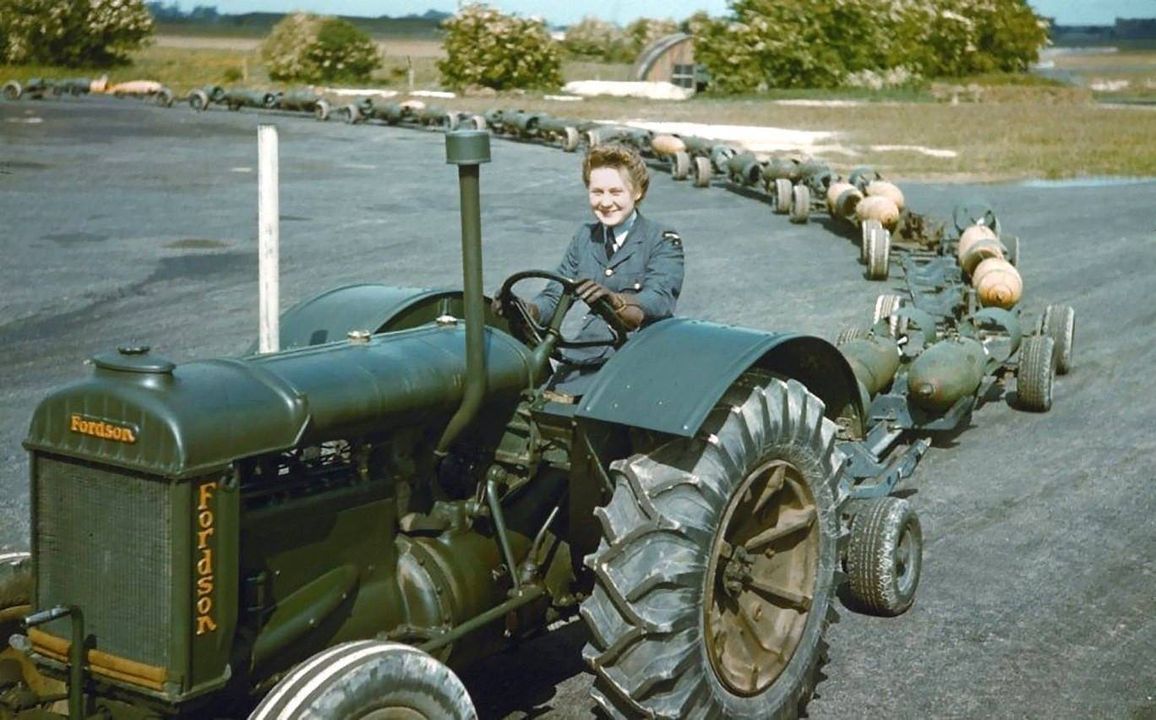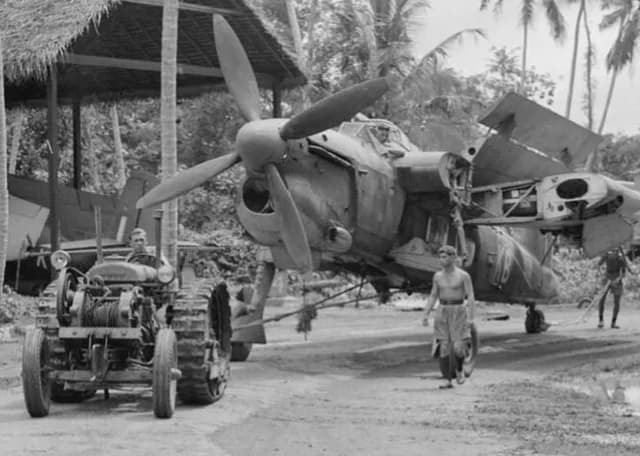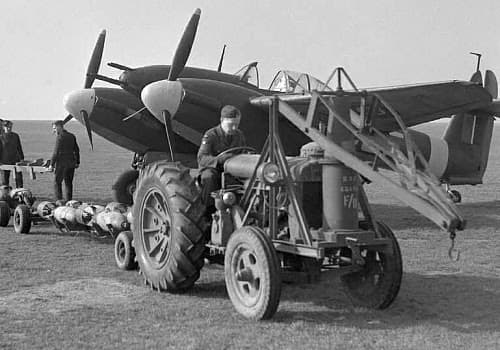The image captures more than just a tractor; it’s a snapshot of wartime resilience and the vital role played by women in the war effort. The Fordson tractor, a ubiquitous machine of the era, takes center stage, but it’s the WAAF (Women’s Auxiliary Air Force) tractor driver, skillfully handling a train of bomb trolleys at RAF Mildenhall in 1942, that truly tells the story.
From Farm to Frontline: The Fordson’s Wartime Service
The Fordson tractor, originally designed for agricultural use, proved to be an invaluable asset during World War II. Its robust design and versatility made it suitable for a wide range of tasks, from towing aircraft to moving heavy equipment. At RAF Mildenhall, a crucial Bomber Command base, the Fordson played a vital role in keeping the airfields operational. The image highlights the often-overlooked logistical efforts that underpinned the air war.
Women on the Frontline: The WAAF’s Essential Role

The WAAF played a crucial role in supporting the RAF during the war. Women served in a variety of roles, from plotting aircraft movements to maintaining vital equipment. The image of the WAAF tractor driver demonstrates their contribution to the war effort, highlighting their skill and determination in performing demanding tasks. Their work, often carried out in challenging conditions, was essential to the success of the air campaign.
Why Remember the Fordson and the WAAF?

This image is a powerful reminder of:
- Wartime Ingenuity: The adaptability of machines like the Fordson to serve in diverse wartime roles.
- Women’s Contributions: The indispensable role of women in the war effort, particularly in supporting roles often overlooked.
- RAF Mildenhall’s History: The importance of RAF Mildenhall as a Bomber Command base and its contribution to the Allied victory.
- Logistical Importance: The vital role of logistical support in military operations, ensuring the smooth functioning of airfields and aircraft.
- Everyday Heroism: The everyday heroism of those who worked tirelessly behind the scenes to support the war effort.
5 Key Aspects of the Image’s Significance

- The Fordson Tractor: Represents the workhorse machinery used in the war effort, repurposed from agricultural use.
- The WAAF Driver: Symbolizes the vital contribution of women to the RAF and the changing roles of women in society during wartime.
- The Bomb Trolleys: Highlight the dangerous and essential work of handling munitions.
- RAF Mildenhall: Indicates the strategic importance of airfields in the bombing campaign.
- 1942: Places the image within a crucial period of World War II.
Frequently Asked Questions
- What was the role of the WAAF during World War II? The WAAF performed a wide range of duties, including clerical work, radar operation, aircraft maintenance, and driving vehicles.
- Why was the Fordson tractor used in the military? Its robust design and versatility made it suitable for various tasks, including towing aircraft and moving heavy equipment.
- What was RAF Mildenhall’s role in the war? RAF Mildenhall was a Bomber Command base, playing a crucial role in the strategic bombing campaign against Germany.
- How did women contribute to the war effort on the home front? Women worked in factories, farms, and various other essential industries, filling roles left vacant by men serving in the military.
- What was life like for those working at RAF bases during the war? Life was challenging, with long hours, demanding work, and the constant threat of air raids.
